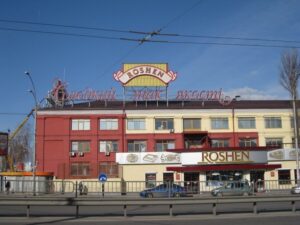
The United States has approved a new $600 million package of arms and ammunition under the Ukraine Security Assistance Initiative (USAI), the US Department of Defense website reports.
“This package includes equipment to strengthen Ukraine’s air defense, artillery ammunition, and other capabilities,” the release says.
The new $600 million defense assistance package includes
– equipment to support and integrate Ukraine’s air defense systems;
– additional ammunition for the Highly Mobile Artillery Rocket Systems (HIMARS);
– 105-mm artillery rounds;
– electronic warfare and electronic countermeasures;
– destructive ammunition for clearing obstacles;
– equipment for demining;
– support and equipment for training, maintenance and sustainment.
“The United States will continue to work with its allies and partners to provide Ukraine with the capabilities to meet its immediate combat needs and long-term security assistance requirements,” the Pentagon emphasized.
Number of refugees from Ukraine in selected countries as of 01.08.2023

Source: Open4Business.com.ua and experts.news

Agrarians in all regions of Ukraine have harvested over 33.7 million tons of new crops, including 29.309 million tons of grains and 4.353 million tons of oilseeds, the press service of the Ministry of Agrarian Policy and Food reports.
According to the report, grain and leguminous crops were harvested on an area of 6697 thousand hectares with a yield of 43.9 c/ha.
To date, Ukraine has harvested barley on 1504 thousand hectares, from which 5.822 million tons (101% of the plan) were harvested; wheat from 4689 thousand hectares was harvested 22.149 million tons (101%); peas from 154.4 thousand hectares yielded 386.5 thousand tons (103%); millet from 33 thousand hectares – 79.4 thousand tons (40%); buckwheat from 45 thousand hectares – 63.3 thousand tons (31%).
In addition, other grains and pulses were harvested in the amount of 807.2 thou tons from 271 thou hectares.
Farmers are finishing harvesting rapeseed. It has been harvested from an area of 1395 thou hectares (98% of the planned area), with a total of 3999.5 thou tons harvested.
Ukraine has started harvesting oilseeds, including 107.4 thou tons of sunflower (49.4 thou tons a week earlier, which is 2% of the plan) from an area of 107.4 thou hectares, and 154.1 thou tons of soybeans (30.6 thou tons) from 60 thou hectares (3%).
The Ministry of Agrarian Policy is monitoring the relevant information in connection with the revision of the harvest forecast for all crops. Thus, the yield of wheat and peas remained at the level of the previous week – 47.2 c/ha and 25 c/ha, respectively, barley yield was 38.7 c/ha against 38.8 c/ha a week earlier, millet yield was 23.8 c/ha (20.4 c/ha), buckwheat yield was 14.2 c/ha (14 c/ha). At the same time, the yield of rapeseed was 28.7 c/ha, sunflower – 18.6 c/ha, soybeans – 25.7 c/ha).
Sugar beet was harvested from an area of 2.6 thou hectares (1%). With a yield of 449.6 c/ha, the company produced 116 thsd tonnes of sugar beet.
Corn harvesting started in Dnipropetrovs’k region. From 0.7 thou hectares, 2 thou tons were harvested at a yield of 30 cwt/ha.
Agrarians in 18 regions have finished harvesting rapeseed.
As reported, this season winter wheat plantings amounted to 4166 thou hectares (-834 thou hectares compared to the previous season), winter barley – 536 thou hectares (-255 thou hectares), and rapeseed – 1374 thou hectares (+110 thou hectares).
According to the adjusted forecast of the Ministry of Agrarian Policy, in 2023, farmers will be able to harvest the following volumes of grain: wheat – 20.9 mln tonnes, barley – 5.8 mln tonnes and corn – 28.1 mln tonnes. Gross production of oilseeds will reach 20.3 million tons, including 12 million tons of sunflower, 4 million tons of rapeseed, and 4.2 million tons of soybeans. The sugar beet harvest is forecast at 13.7 million tons.

MHP, Ukraine’s largest chicken producer, has signed a shareholder agreement to establish a joint venture with Desert Hills Veterinary Services Company Limited (DHV), a subsidiary of Tanmiah Food Company, a leading supplier of poultry and other meat products in the Middle East listed on the Saudi stock market.
“This partnership will allow DHV and MHP to join forces to invest over SAR 200 million (about $53 million at current exchange rates) in farms with a capacity of over 1 million parent flocks, which are expected to produce around 175 million hatching eggs per year, in a state-of-the-art hatchery and poultry feed mill,” MHP said in a statement to the London Stock Exchange on Friday.
Building on the foundation laid by the Memorandum of Understanding signed earlier this year, DHV will hold a 55% stake and MHP will hold a 45% stake in the joint venture.
According to the agroholding, this year MHP and DHV signed a memorandum of understanding to cement their partnership to join forces to develop farms with a capacity of more than 1 million birds, which will produce about 175 million hatching eggs annually. A modern poultry hatchery and feed mill will also be built in Saudi Arabia.
“The deepening of our alliance with Tanmia is a strategic turning point in MHP’s global reach. This partnership symbolizes our shared vision of integrating international expertise with local knowledge and ensuring that Saudi Arabia achieves its food security goals. Our collective strengths will catalyze transformational achievements in the poultry sector, driving innovation and setting new standards of excellence,” said John Rich, MHP Executive Chairman.
“Our collaboration with MHP means more than just a partnership; it reflects our commitment to strengthening Saudi Arabia’s food security system. By leveraging our local knowledge combined with global best practices, our portfolio of first-class products, services and solutions demonstrates our commitment (…) to the broader goals of Vision 2030,” said Zulfiqar Hamadani, CEO of Tanmiah Food Company (a subsidiary of DHV).
According to the report, the signing of the shareholders’ agreement is a crucial step in the establishment of the joint venture after obtaining the necessary approvals, including the permission of the General Authority for Competition of Saudi Arabia and other relevant jurisdictions.
The signing ceremony was attended by Sheikh Amr Al-Dabbagh, Chairman of the Board of Tanmiah Food Company (a subsidiary of DHV), as well as members of the Board and executive management of the company, representatives of the Saudi government, and Ambassador of Ukraine to Saudi Arabia Anatoliy Petrenko. MHP’s Board was represented by Executive Chairman John Rich and Managing Director Yevgeny Levterov.
Tanmiah Food Company is a leading supplier of poultry and other meat products in the Middle East, listed on the Saudi stock market. The company was founded in 1962. Its business model combines enterprises in agriculture, primary processing and marketing of products sold in Saudi Arabia, the UAE, Bahrain, Oman, Jordan and Kuwait. Tanmiah Food Company is the main franchisee of Popeyes Louisiana Kitchen.
As of June 30, 2023, Tanmiah operates 114 farms, as well as six hatcheries, two feed mills and four primary processing plants (slaughterhouses). It sells its products through a network of wholesalers, retailers and food outlets, as well as through its e-commerce platform.
MHP is the largest producer of chicken in Ukraine. It also produces grain, sunflower oil, and processed meat products. MHP supplies chilled chicken half-carcasses to the European market, which are processed, in particular, at its facilities in the Netherlands and Slovakia. In February 2019, the holding completed the acquisition of the Slovenian company Perutnina Ptuj.
In 2021, MHP earned $393 million in consolidated net profit against a net loss of $133 million in 2020, while its revenue increased by 25% to $2.37 billion. In the first nine months of 2022, the agricultural group reported a net loss of $269 million, compared to a profit of $377 million in January-September 2021, and its revenue increased by 14% to $1.88 billion.
In the first quarter of 2023, MHP’s revenue increased by 34.7% compared to the first quarter of 2022 to $745.60 million, and net profit amounted to $49.07 million compared to $108.25 million (at the same time, exchange rate gain amounted to $4.18 million compared to exchange rate loss of $95.32 million).
MHP’s founder, majority shareholder and chairman of the board is Ukrainian businessman Yuriy Kosyuk.

“On September 6, Ukrainian Financial Housing Company announced a tender for the purchase of health insurance and health insurance in case of illness.
According to a posting in the Prozorro electronic public procurement system, the expected cost of the services is UAH 1.494 million.
Documents will be accepted until September 21.
“Ukrfinzhytlo is engaged in the state program to provide affordable mortgage lending.

PJSC Kyiv Confectionery Factory Roshen, a member of Roshen Corporation, will increase the authorized capital by 33.2%, or by UAH 500 million – up to UAH 2.006 billion through an additional issue of shares.
“Financial resources raised from the placement of shares, 100% will be directed with the purpose and directions for the acquisition of production equipment,” – noted in the message of the company in the information disclosure system of the NCSSM.
According to it, the placement may lead to an increase in the share of the majority shareholder – the subsidiary “Confectionery Corporation “Roshen”, which at the end of the first quarter of this year already owned 96.9017% of shares.
Taking into account the additional issue, the share of the majority shareholder may reach 97.674%.
It is specified that the decision on additional capitalization was made by the shareholders’ meeting, which was held remotely on August 21 and the minutes of which were drawn up on September 1.
In total it is planned to issue 2 billion pieces of common registered shares with par value of UAH 0.25, they will be placed at the market price at the level of par value, which was determined by the appraiser LLC “AR G Satellite”.
Roshen Corporation, according to the information on its website, ranks 27th among the largest confectionery manufacturers in the world. It includes Kiev, Kremenchug, two Vinnitsa confectionery factories and Vinnitsa dairy plant, Biscuit complex in Borispol (Ukraine); Klaipeda confectionery factory (Lithuania) and Bonbonetti Choco factory (Hungary). The production activities of the Lipetsk factory (Russian Federation) have been halted since April 1, 2017.
The corporation produces about 320 types of confectionery products. The total production volume is about 300 thousand tons of products per year.
The Roshen branded stores network in Ukraine includes about 70 stores in different regions of the country.
The first one was opened in 2009 in Kyiv.In 2022, PrJSC Kyiv Confectionery Factory Roshen posted a net loss of UAH 984 thousand compared to UAH 25.779 million in profit a year earlier, while the company’s revenue decreased from UAH 979.286 million to UAH 903.195 million.The ultimate beneficiary of the company is the son of former President of Ukraine Petro Poroshenko, Oleksiy.